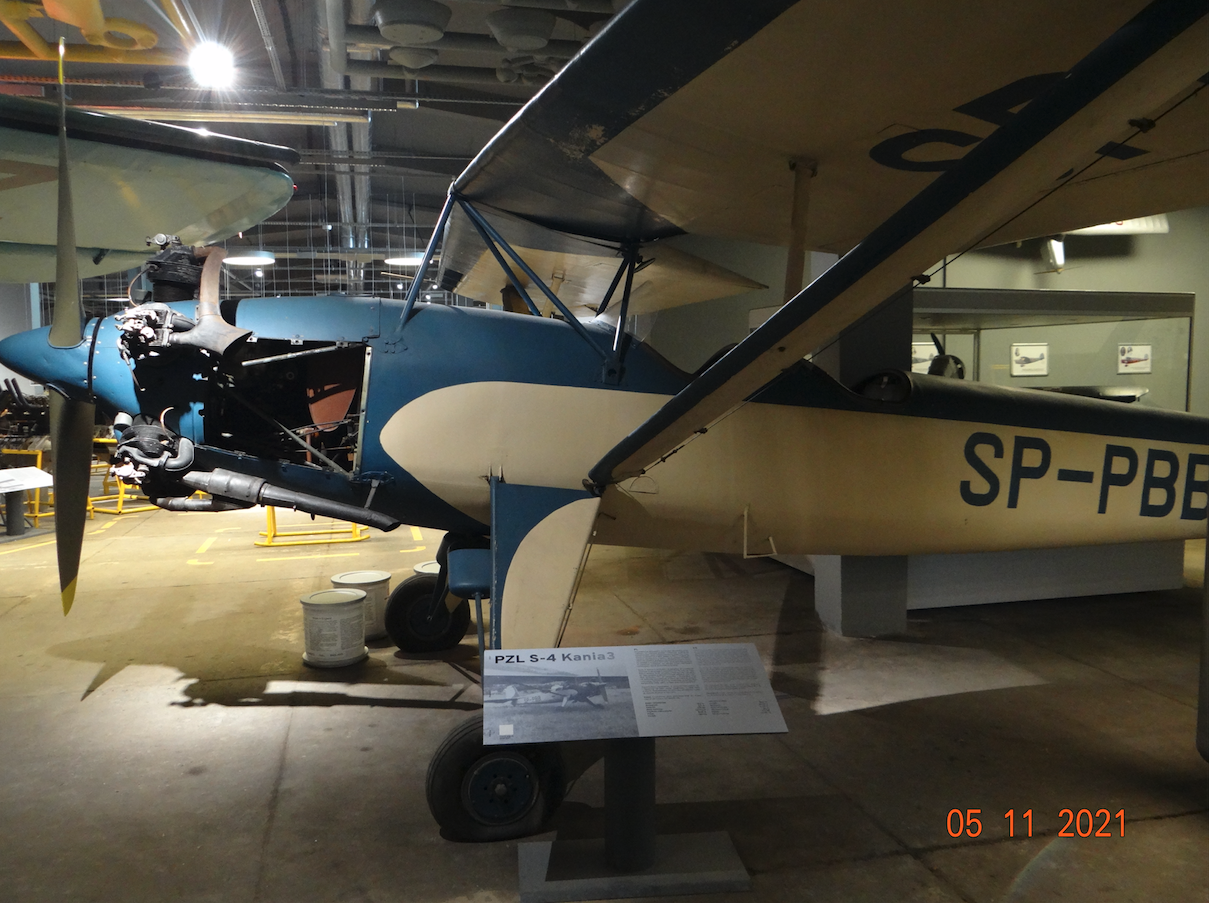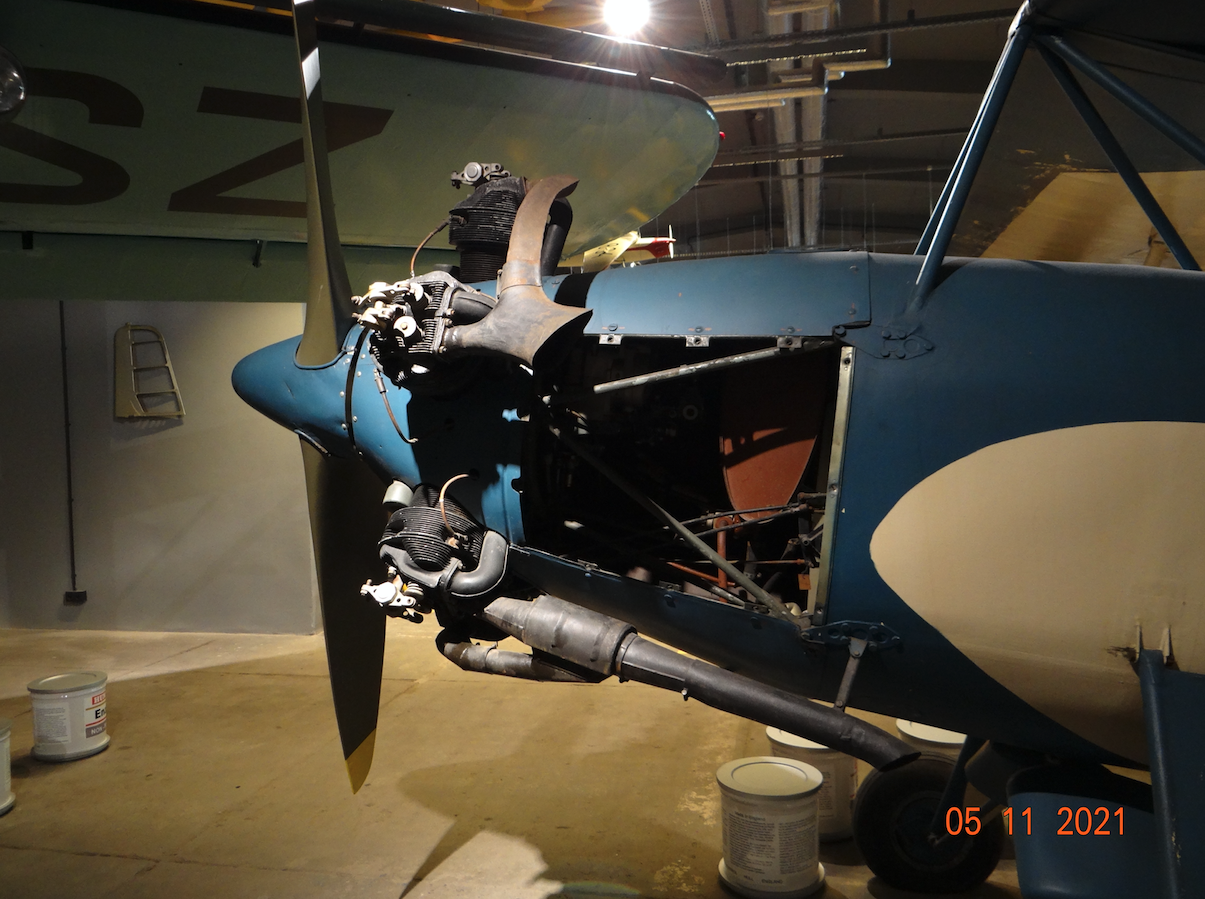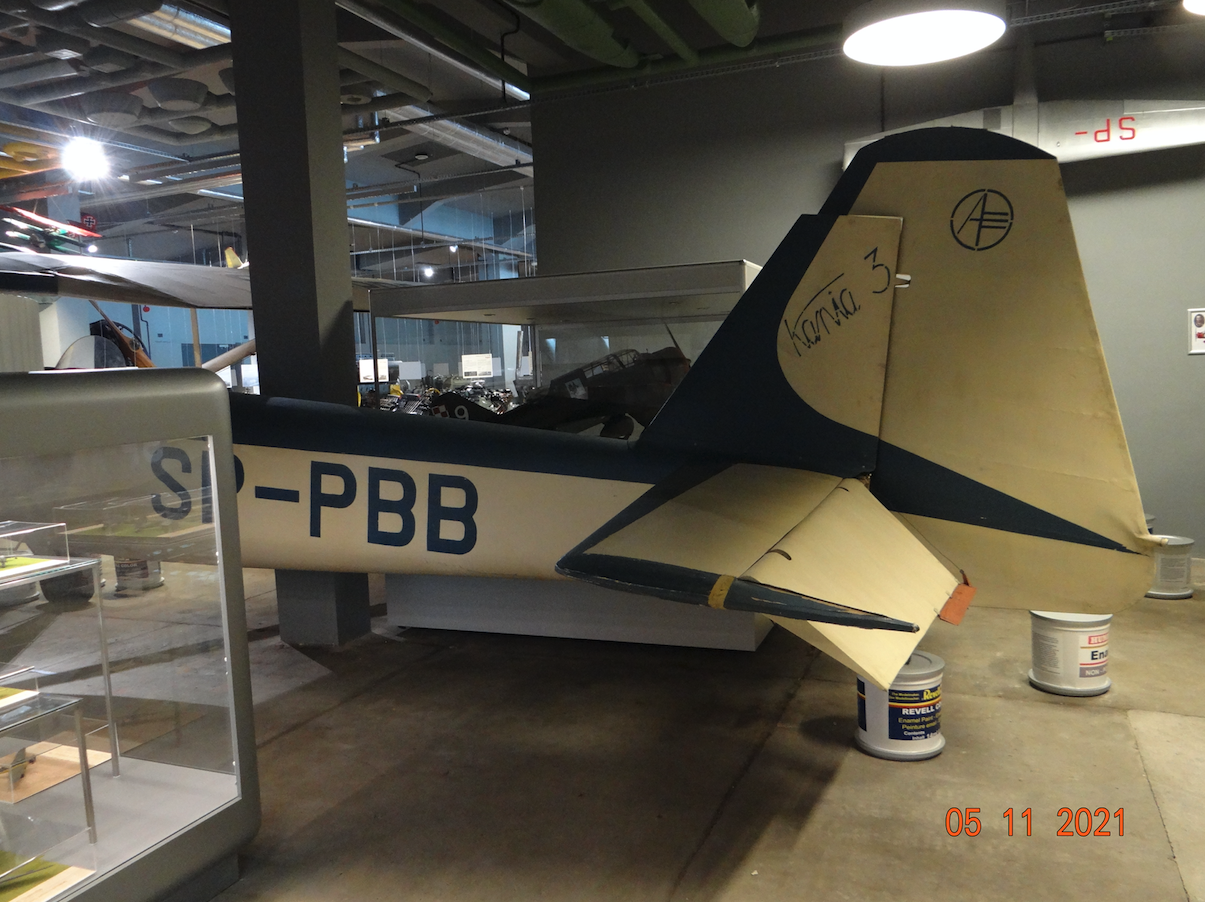Kraków 2021-10-07
PZL S-4 Kania 3.
After the Second World War, the first Polish successful aircraft was the PZL S-1, designed by Capt. Eng. Eugeniusz Stankiewicz, lecturer at the United Military Aviation School. The plane was built in one copy and unfortunately crashed. However, the experience gained from its operation and the instructions provided by the Central Institute of Aviation allowed for the development of new aircraft. The first was the S-2, which remained only on the drawing boards. In 1950, the S-3 Kania aircraft, which was later called "Kania 1", was built at the Glider Experimental Plant in Bielsko Biała (Aleksandrowice). Its tests were conducted at the Gocław airport in Wrocław. The plane showed good performance and ease of piloting. But those were not good times for Polish aviation structures. In Warsaw, it was found that the plane does not have all the strength and aerodynamic calculations, and besides, the landing gear is too weak to land in unimpeded terrain. It was left at the mercy of weather conditions, after which it was dismantled.
In 1956, the WSK PZL Mielec plant became interested in the construction. The documentation of the aircraft from 1950 has been preserved. In Mielec, a group of young engineers led by engineer Eugeniusz Stankiewicz improved the documentation, adapting it to new technologies. In the summer of 1956, the S-4 "Kania 2" plane was built in Mielec and received registration from SP-PAA. The plane made its first flight on September 9, 1956. Although a different flight date is possible. The plane passed the factory tests without much difficulty. The aircraft was demonstrated at the 1958 World Gliding Championships in Leszno, arousing great interest among foreign experts, especially in demonstrations of towing several gliders. According to available memories, there were already two such planes at this competition. Airplanes towed gliders to individual competitions. But they also towed gliders from random landing sites, which was what aroused the admiration of foreign participants.
The refined design was the S-4 "Kania 3" aircraft, SP-PBB registration. The plane was built at the Aviation Repair Works in Krosno (although it is possible to build this plane in Mielec). The plane made its first flight on September 19, 1958. Another plane was built in Krosno in 1963. Received SP-PBE registration. At that time, the SP-PAA plane was brought to its standard form.
You can find old photographs with the PZL S-4 plane painted with chessboards. It was an attempt to interest the Polish Army in this plane, which did not happen. Ultimately, all planes were used by Aeroclubs. PZL S-4 "Kania 3" has been approved for use in the field of pilotage training, basic acrobatics, landing in an adventurous terrain and towing gliders. The plane could tow three gliders at the same time.
The PZL S-4 "Kania 3" aircraft was much better in terms of piloting than the CSS-13 (Po-2). It was also much cheaper to run. However, the production of a larger series of PZL S-4 "Kania 3" aircraft was not undertaken. Only three were built in total. One of the reasons was the discontinuation of production of the M-11D engines. In addition, in 1963, the excellent PZL-104 Wilga aircraft appeared.
In 1971, the PZL S-4 "Kania 3" plane, serial number 02, SP-PBB registration, went to the Museum of Aviation and Astronautics in Krakow, now the Polish Aviation Museum.
Construction PZL S-4 Kania 3.
Two-seater high-strut wing, the so-called umbrella, with a mixed structure.
The leaf has a rectangular-trapezoidal outline, mainly made of wood. The wings are single-spar. The middle part of the lobe rests on a pyramid. The outer parts are supported by single braces. The wings are covered with glue and canvas. The wings are equipped with fixed gills and ailerons. Apart from the ailerons, the trailing edge has large metal crocodile flaps.
The fuselage is slender, with an oval cross-section. Open cabins. A metal firewall is installed between the cabin and the engine compartment.
Classic tail with a trapezoidal outline. Horizontal stabilizer, not divided, supported by struts made of steel tubes. Single-spar ballasts, covered with plywood. Wooden skeleton of rudders, canvas covering.
Classic fixed chassis with rear support.
M-11D Shevtsov star engine, take-off power of 92 kW (125 HP). The engine was produced in Poland.
Data T-T PZL S-4 Kania 3:
Span 12.16 m. Length 8.72 m. Height 2.35 m. Bearing area 19.70 m2. Curb weight 660 kg. Payload 298 kg. Gross weight is 970 kg. Top speed 171 km / h. Cruising speed 130 km / h. Minimum speed 63 km / h. Rate of climb 4.5 m / s. Service ceiling 5,100 m. Range 580 km.
Written by Karol Placha Hetman




